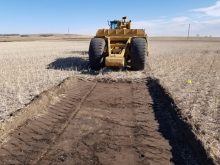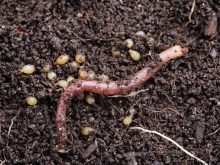My Dundurn farm is rolling Weyburn/Elstow loam with some very eroded knolls. For many years the combine raced over the knolls with little pouring in the hopper. The erosion over the decades was by water, but much of it from annual tillage — especially in the days of summerfallow.
Read Also

Claas brings 1000 Series SP forage harvesters to Canada
In mid-August, Claas unveiled its new line of Jaguar forage harvesters at an event in Visalia, California, deep in the heart of that state’s dairy region.
A few years ago I acquired a six-yard Crown scraper which my 108HP MFWD tractor handles well. Some of two feet of topsoil resting comfortably down slope and around sloughs has been moved to the eroded knolls. In the fall of 2011 I broadcast a large rate (about 300 pounds per acre of 12-52-0) on most of the knolls. This was one of the worst knolls that grew little; now it looks just like the rest of the quarter.
The above can hardly be described as any sort of precision, but it does deal with the individual soil problem within a quarter section and is gradually making the former eroded knolls as productive as much better parts of the quarter.
- More Grainews with Les Henry: The challenges of precision ag
I really have no data to calculate the economics of what I have done, but it will certainly be a lot more fun running the combine over the formerly desperate excuse for a soil.
This article first appeared in the July 22, 2014 issue of Grainews















